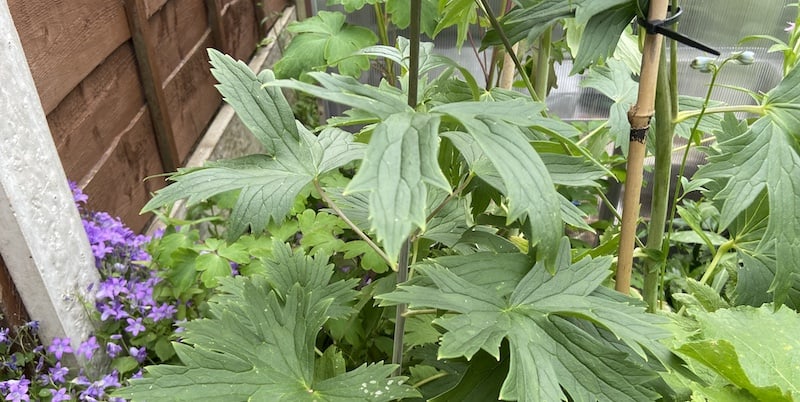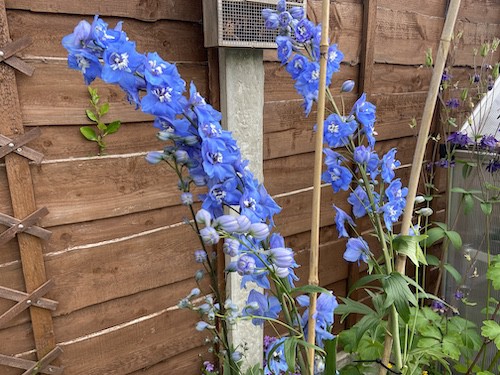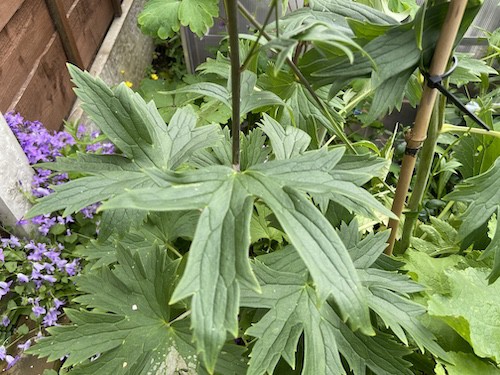
Why are my delphiniums not flowering?
Our site is reader supported, this means we may earn a small commission from Amazon and other affiliates when you buy through links on our site.
You need to do some detective work to figure out which of several issues are why your delphiniums are not flowering. I give the main reasons here and guide you in what to look for to establish the main cause. in general, they either just need a little time to establish (usually the first year of planting), they’re not getting enough sunshine (they need full sun) and another common one is overfeeding with nitrogen which encourages lots of leafy growth but no flowers. That being said lest dig into the reasons as well as a few less common problems that can lead to your delphiniums not blooming.
Having success when growing delphiniums starts with knowing what they need, full sun, moist but well-drained soil and taking some time to prepare them for winter as well as knowing when to cut them back to get that second flush of flowers. If you have this covered, then read on to learn why they might not be flowering dispute providing the best growing position and care.
New plant (Easy to solve)
If you’ve just planted your delphinium, give it time to establish itself before you expect it to flower, this is especially true if you plant root stock. Some new plants won’t bloom at all in their first year. So don’t give up; be patient until the second year if no buds or blooms appear. This is an easy problem to solve as it just means being a little more patient.
Aster yellows
This is a virus that deforms your flowers. Insects called leafhoppers spread this disease. Check your plant to see if anything at all has developed where the flowers should be. You may find a leaf-like tissue in light green instead of a normal flower. The ‘petal’ parts are deformed and also light green. Sometimes only one side of your plant is infected and the flowers on the other side are OK. There is no cure for this virus and it’s actually spread by tiny insects so the best course of action is to just remove the affected plant to avoid it spreading to other plants.
Too much phosphorous
Delphiniums not flowering can be due to an excess of phosphorous in your soil. This happens because the roots can’t take up the other micronutrients, particularly iron and zinc which the delphiniums need for healthy development including the flowers although they do need phosphorous for flower and seed development. There is no easy fix for this, I usually recommend that you stop applying fertilisers that contain phosphorous and use something to bone meal early in the season. But be careful not to overfeed as this bring me to the next possible reason your delphinium is not flowering.
Overfeeding with bone meal
Overfeeding with any fertiliser can cause delphiniums not to flower but especially bone meal. Feeding too much can cause excessive green growth and no flowers. If you think you have overfed your plants I recommend just applying bone meal in spring as new growth emerges. I also recommend cutting them back to ground level after flowering as it often promotes a second flush of blooms.
Too little or too much water
If your soil is too well-drained and is not retaining enough moisture, the plant may react by not developing blooms. On the other hand, too much water or moisture can lead to crown rot. This is a disease in which rot spreads throughout the root and stem and prevents the plant from blooming. This is an easy fix, let the soil surface dry before watering. I also don’t usually water established plants unless in pots or there is a serious prolonged lack of rain.
The right species for your climate
Not all species of delphiniums thrive in all climates. Make sure that your variety of these plants is suitable for where you live. And that you’ve planted it in the right environment (sunlight, shelter, soil etc.) for its healthy growth. This means planting them in a sunny position in well-drained but fertile soil.
For more detailed information about the problems and their solutions, with delphiniums, check out my Problems with delphiniums, including pests and diseases article.

